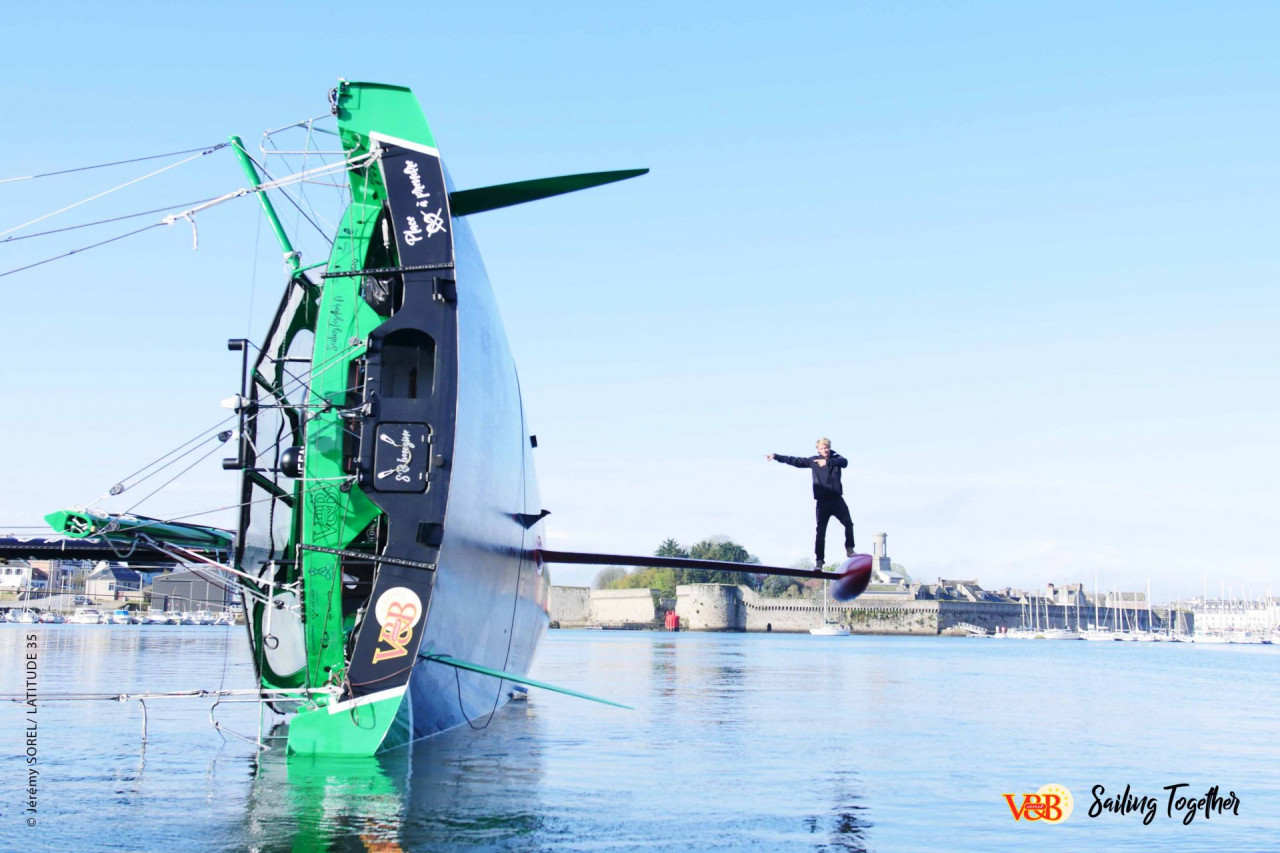How do the IMOCA measurement checks work?

The IMOCA class has laid down many different precise criteria (which can evolve) in order to improve the safety of the sailors and to ensure that the contest is fair…
The IMOCA class has laid down many different precise criteria (which can evolve) in order to improve the safety of the sailors and to ensure that the contest is fair. While some data is relatively simple to check, such as the length, beam, weight and number of sails, others are much more complicated to deal with, in particular those concerning stability and power. Carried out by René Boulaire, the chief measurer and Manu Guedon, in close contact with the IMOCA teams, this work around the rules is essential, as we see today with those concerned.
There are various phases to the process of checking whether an IMOCA conforms to class rules. The first takes place during the construction. Working closely with the team, the architect and builder, the chief measurer, René Boulaire, assisted by Manu Guedon, checks the techniques used to manufacture the boat, the materials used and the size and characteristics (length, beam, draught, air draught).
Once the boat leaves the yard, the boat and her foils and mast are weighed and the keel is checked to make sure it conforms to the specifications, alongside many other checks. Then, the boat undergoes the spectacular 90 degree test, which involves putting the boat over on her side on the water to determine the centre of gravity. This test is carried out for brand new IMOCAs, but also when important modifications are made, such as a change of mast, keel and appendages…
Stability and power, the two major criteria in the IMOCA rules
Once the weight and centre of gravity have been determined, they can move on to the next phase of checks, which involve stability and power criteria. Réné Boulaire and Manu Guedon’s work involves carrying out the most accurate physical measurements possible so that the calculators have the right data to check the stability criteria. For each boat, these calculations are carried out digitally at least once a year, thanks to some very advanced digital simulation.
“For new IMOCA boats, the RM (righting moment) for the boat must be less than or equal to 25.5 tonnes/metre at 25 degrees of heel,” indicated René Boulaire for example. A 180 degree test is also simulated. The boat is turned completely over and must be capable of righting herself when the canting keel is shifted. Other tests ensure the boat does not capsize before a heel of 110°. “We want the IMOCA boats to be as seaworthy as possible and capable of sailing around the world in total safety. We have to do our utmost to ensure they do not capsize and stay upside down,” explainedAntoine Mermod, President of the class.
Regular checks on the sensitive areas and the safety gear
Each year, the teams have to carry out other checks to obtain their class certificate, which is a vital document if they want to take part in races on the IMOCA calendar. The mast has to be checked with the help of ultrasound technology. As for one-design keels, they have to be inspected once every four years.
René Boulaire and Manu Guédon regularly step aboard IMOCAs to check all the safety gear. At the start of some races, such as the Bermuda 1000 Race, which is taking place early in the season, they work in close collaboration with the FFVoile (French Sailing Federation) staff carrying out official ocean racing equipment checks. “We go right around the boat to check all the different elements, such as the lifelines, the guard rails, stanchions, pulpits, beacons, life rafts, etc. All of these parts of the boat need to conform to IMOCA class rules, as they are written down,” addedManu Guedon. “We also need to check the paperwork for the boat, and see whether the registration documents are up to date and everything is declared correctly and that the boat is fit to sail.”
The measurer at the heart of the design of the boat and changes that are made
René Boulaire and Manu Guedon are in regular discussions with the teams to work with them and define clear limits concerning class rules. There are many rules that need to be respected and they are all very precise. Throughout every phase of the project, the various measurement checks take time and are complicated, and admittedly impose a burden on the sailors. But they are absolutely vital when we look at the Vendée Globe. “Our aim is not one of repression but on the contrary to be constructive,” stressed René Boulaire. “We answer any queries from the competitors and offer our assistance, helping them to respect the various class rules.”
Teams info
After a stunning 2025 season Sam Goodchild is the IMOCA Globe Series Champion for the second time
After a long season at the top of the IMOCA fleet that featured three race wins, Great Britain’s Sam Goodchild is for the second time in three years the IMOCA Globe Series Champion.
•••Quel rôle peut jouer la course au large dans la transformation du transport international ? Avec Pie…
Pour ce 10ᵉ épisode de Transitions, enregistré au Havre lors du départ de la Transat Café L'Or, nous recevons Jeremy Pochman, PDG de 11th Hour Racing, et Pierre-Antoine Morvan, responsable du pôle course au large et supe…
•••